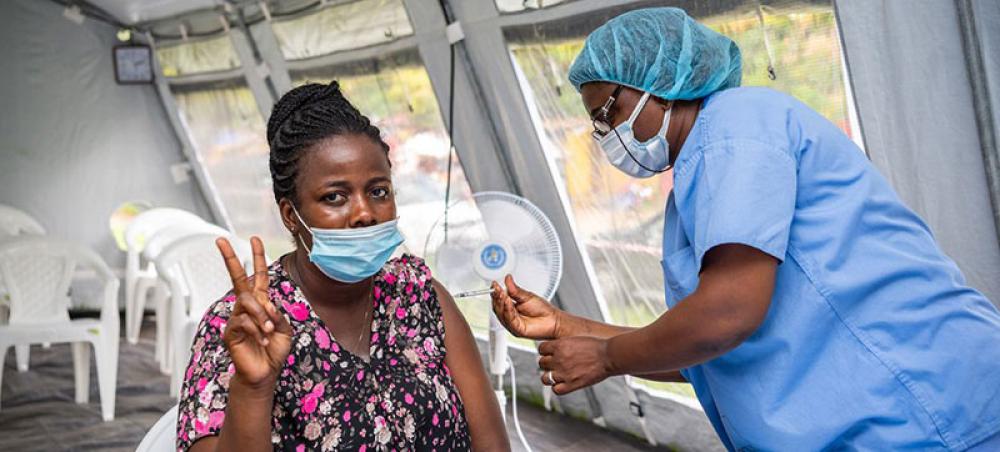Just Earth News | @justearthnews | 11 Feb 2022, 03:19 am Print
 Africa Pandemic
Africa Pandemic Image: UNICEF/Zoe Mangwinda
New York: Africa is on track to control the COVID-19 pandemic this year if current trends continue, but vigilance will remain key, the head of the World Health Organization’s (WHO) regional office said on Thursday.
Since the first case on the continent was identified nearly two years ago, Africa has faced four waves of COVID-19, each with higher peaks or more total cases than the previous one.
These surges were mainly driven by new variants which, though highly transmissible, were not necessarily more fatal.
Against the odds
On average, each wave was roughly 23 per cent shorter than the one before, with the first lasting 29 weeks, while the fourth ended in six weeks.
Dr. Matshidiso Moeti, WHO Regional Director for Africa, said countries have got smarter, faster and better at responding to each new surge.
“Against the odds, including huge inequities in access to vaccination, we’ve weathered the COVID-19 storm with resilience and determination, informed by Africa’s long history and experience with controlling outbreaks,” she said.
However, she said Africa has paid a high price in the pandemic, with more than 242,000 lives lost and tremendous damage to economies.
COVID-19 has also pushed some 40 million people into extreme poverty, according to World Bank estimates.
End in sight
Meanwhile, every month that emergency containment measures stay in place costs the continent roughly $13.8 billion in lost Gross Domestic Product (GDP).
“Although COVID-19 will be with us for the long-term, there is light at the end of the tunnel. This year we can end the disruption and destruction the virus has left in its path, and gain back control over our lives,” Dr Moeti said.
“Controlling this pandemic must be a priority,” she added “but we understand no two countries have had the same pandemic experience, and each country must, therefore, chart its own way out of this emergency.”
During the first COVID-19 wave, the proportion of infected people who died from the disease was high, 2.5 per cent. The figure rose during the second wave, driven by the Beta variant, reaching 2.7 per cent, but had dropped to 2.4 per cent by the Delta-powered third wave.
In contrast, the fourth wave ratio was low, 0.8 per cent, representing the first time a wave’s surge in cases has not led to a corresponding increase in hospitalizations and deaths.
Improving capacity
Africa has improved capacity to manage COVID-19 cases since the pandemic began, with the increased availability of trained health workers, as well as oxygen and other medical supplies.
The number of beds in Intensive Care Units (ICUs) across the continent also rose from eight per one million people two years ago, to 20 today.
WHO has also helped increase the number of oxygen production plants on the continent, from 68 to 115, a 60 per cent rise, through supporting the repair, maintenance and procurement of new oxygen plants. The cost of oxygen has also decreased by 40 per cent in areas where plants have been set up.
Even with these improvements, oxygen availability remains a concern, and a large majority of patients who require it for treatment lack access.
- From thinning to thriving? New hair loss treatment is showing promising results in trials
- Surprising coffee link: Daily cups may slow ageing in severe mental illness
- Malaria crisis looms as WHO reveals explosive rise in drug resistance
- Study shows nanoplastics from bottles are not just pollution—They may be harming you from within
- Are birth control pills affecting your mental health? New study raises red flags



-1763561110.jpg)


